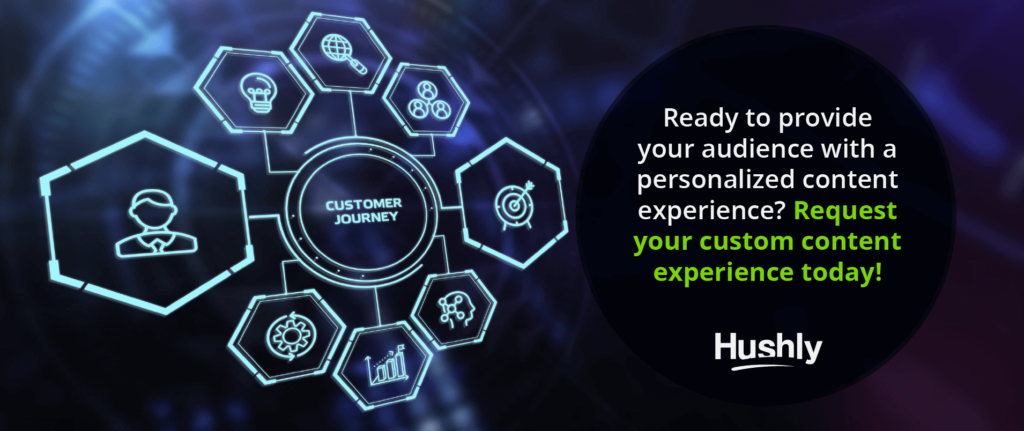Buyer journey mapping can be an excellent B2B marketing technique for helping your company understand how your potential customers reach their decision to do business with you. But buyer journey mapping can be a tricky thing to get right.
While studies show that effective buyer journey mapping can increase cross-sell and upsell revenue by an average of 79%, if you’re not approaching the mapping journey the right way, you could be missing out on significant potential.
Are you using the concept of buyer journey mapping to your benefit? Or are you one of the many B2B brands that are missing a massive piece of the puzzle?
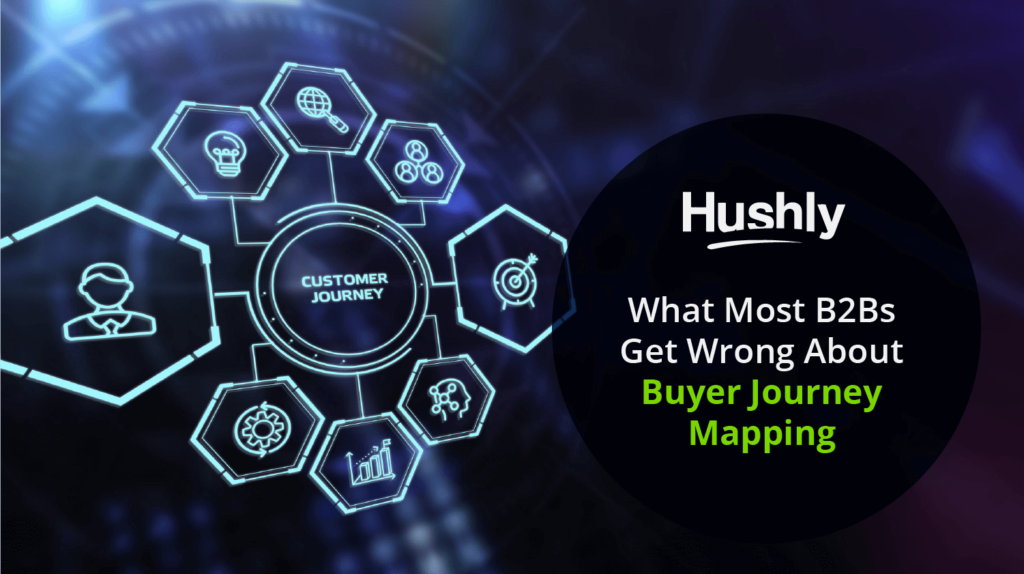
Buyer Journey Mapping: What is It?
Buyer journey mapping is the process of defining your ideal customer and where they’re at in the buying process. It is a visual representation of how your prospect interacts with your business, from the moment they become aware of who you are and what you do to the point when they make a purchase.
The goal of buyer journey mapping is to help you understand how your customer makes their purchasing decisions, which will help you create the best possible customer experience.
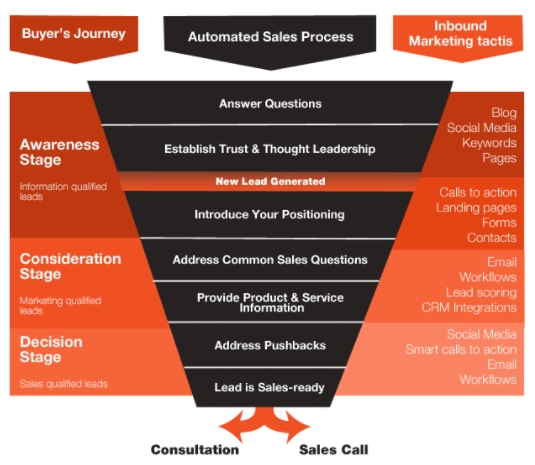
When you map the buyer journey, you can gain insights into how your potential customers interact with your brand.
Why Traditional Buyer Journey Mapping Doesn’t Work
Unfortunately, many B2B companies try to use this information to control their customer’s behaviors, which simply isn’t feasible. You can’t control how your potential customers behave, but you can control how you interact with them.
The problem with traditional buyer journey mapping is that it focuses on what your customer should do rather than what they actually do. As a result, you end up with a difficult-to-follow map that doesn’t accurately reflect the buying process.
How to Do Buyer Journey Mapping Right: Focus on What You Can Control
So how can you make buyer journey mapping work for your B2B business? It all comes down to knowing what you can and can’t control. While a traditional buyer journey map can help you understand what your customers want of you at specific buyer journey stages, you need to realize that your job now is to supply them with the information they need to make a confident buying decision.
Most importantly, that means supplying them with various pieces of content and plenty of non-promotional interactions that make them believe that their decision to make a purchase was 100% their own.
So, instead of focusing your attention on trying to control the buyer’s behavior, focus on what you can control, including:
Creating Premium Website Content
Your buyers will come to your website looking for answers to their questions. Make sure that you have quality, easy-to-find content that will answer those questions. Your website is your B2B marketing hub, so make sure it’s a place where prospects will want to come again and again.
Premium website content goes well beyond your standard blogging calendar. Instead, you want to make sure you are providing your audience with a vast array of content options, including:
- Infographics
- Slideshows
- Video content
- eBooks
- Case Studies
- Whitepapers
Ensure that you are providing your audience with a steady stream of quality, value-adding content that will help them make a confident, well-informed decision.
Creating Valuable Social Media Posts
Social media is a powerful way to make connections with your prospects. Make sure that you’re using your social media platforms to engage with them, not just to push your content and products.
A great way to use your social media platforms is by sharing thought-provoking posts, highlighting consumer comments/reviews, and even sharing third-party posts for your audience to check out. Content curation is a great way to show your leads that you’re a trusted resource for them when it comes to making a purchasing decision.
Writing Informative Blog Posts
One of the best ways to engage your prospects is by providing them with educational content that helps them with their buying decisions. By providing your audience with the information they need, you’re building a relationship based on trust and valuable information, rather than one based on you trying to control their behaviors.
The key here is to make sure your publishing relevant content consistently, as 47% of B2B buyers say they will read at minimum three to five pieces of content from a brand before they make the decision to even speak with a salesperson.
Personalizing Content for Your Audience
Personalized content is more effective than mass-produced content. Studies show that B2B consumers have extremely high expectations when it comes to personalization. 84% of business buyers state they are more likely to buy from sales reps that understand their needs/goal.
Again, you can’t control what your leads do. However, you can demonstrate that you understand their goals by providing them with personalized content to answer their questions or directly address their concerns.
Depending on how your audience is receiving their information (your website, from signing up for your email newsletter, etc.), you can personalize your content delivery in several ways. For instance, if an individual is receiving information via email, you can direct them to an email preference center so that they can tell you exactly what kind of information they want to receive.
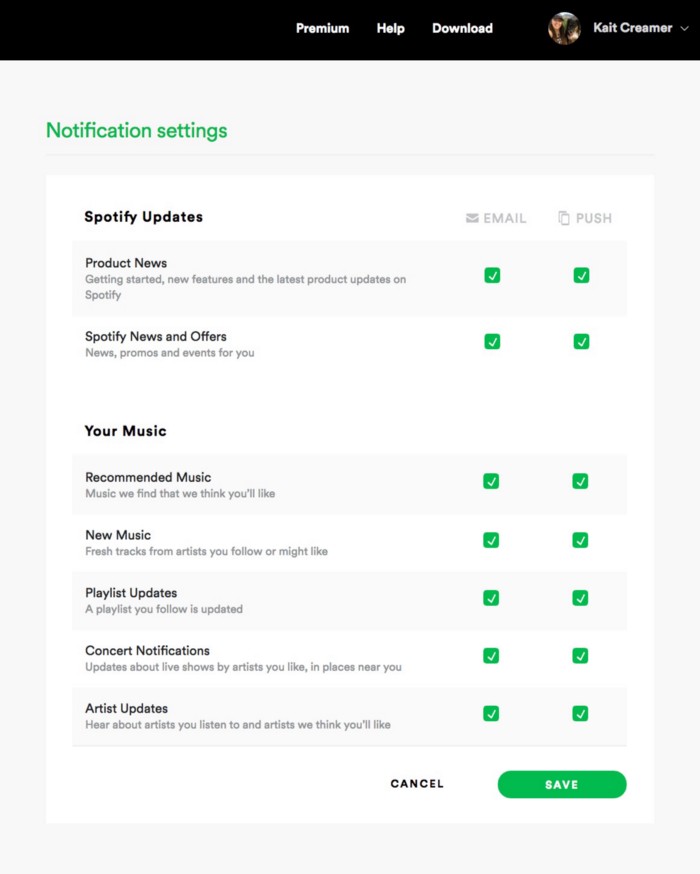
However, if you’re looking to give your audience a personalized experience while viewing your content, you can implement an adaptive content hub that utilizes AI to present only the most relevant content to each of your audience members.
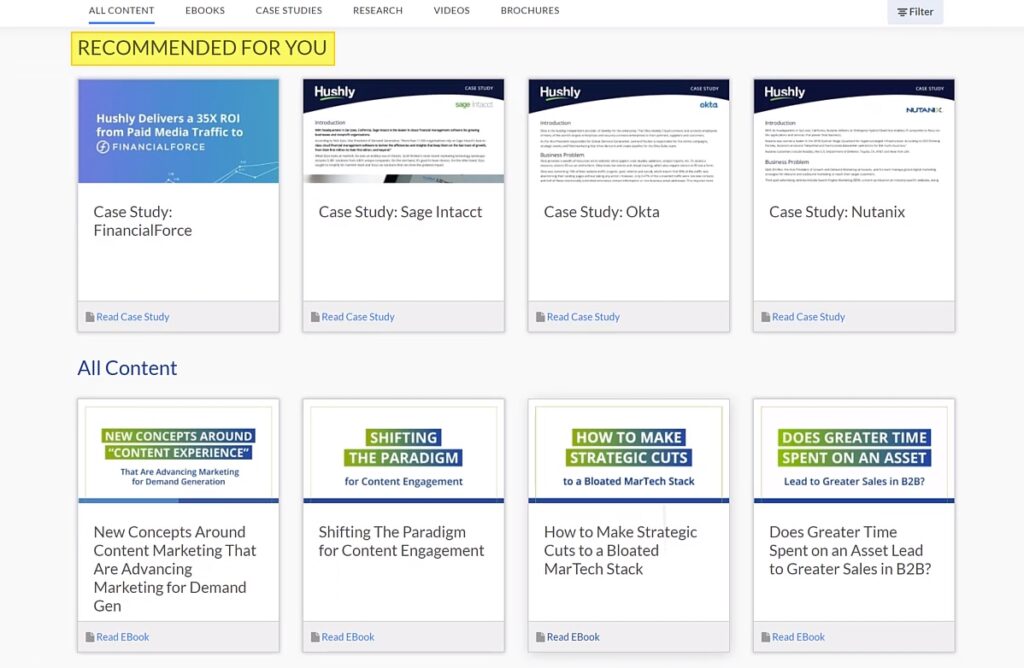
Give Your Users What They’re Looking for with Hushly
Are you ready to give your B2B audience the most immersive, personalized experience yet? Then you’ll want to check out Hushly’s adaptive content hub.
With today’s B2B buyers being flooded with information from all angles, it can be challenging to sift through it all. Instead of bombarding them with a site full of possibly irrelevant content, why not give them the right information right off the bat? By implementing AI technology, our content hub does just that.
Ready to provide your audience with a personalized content experience? Request your custom content experience today!

